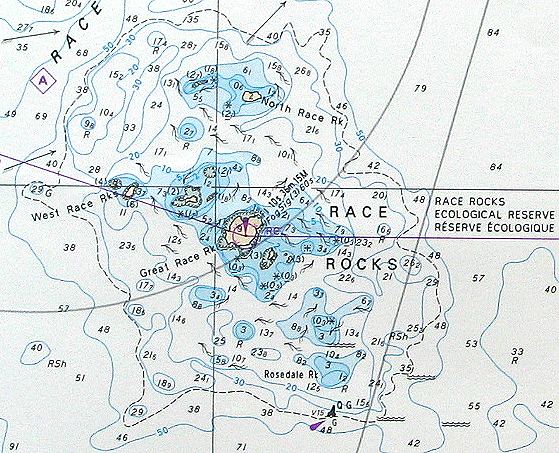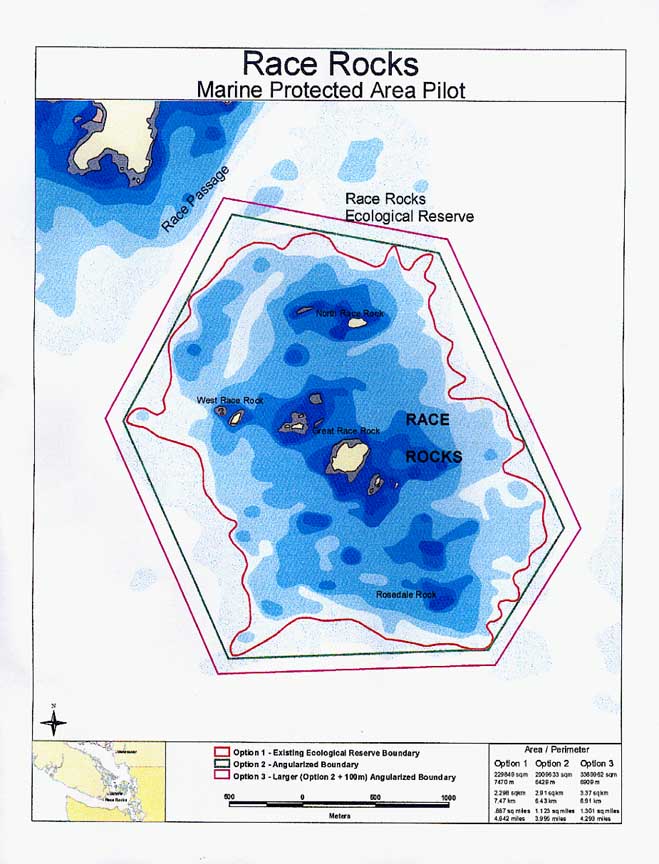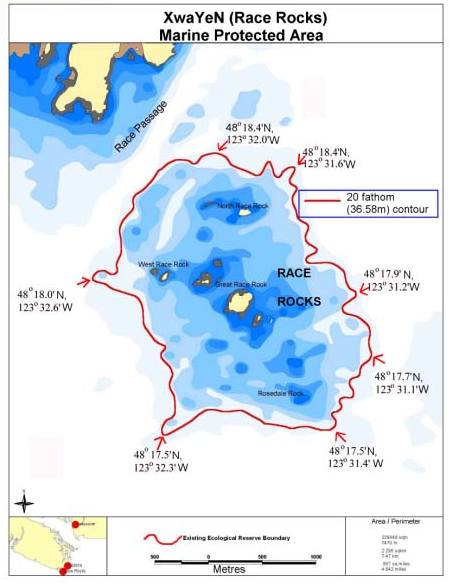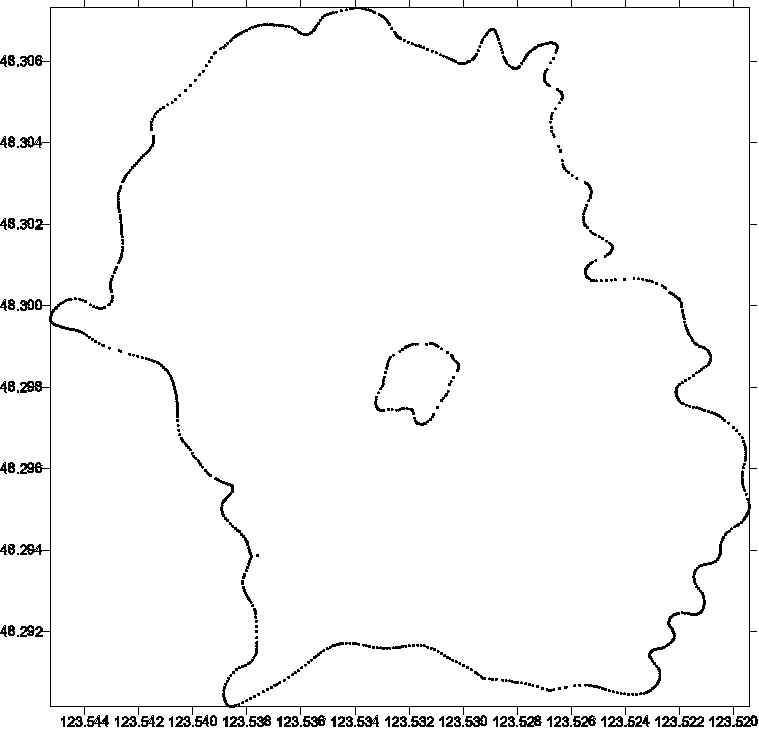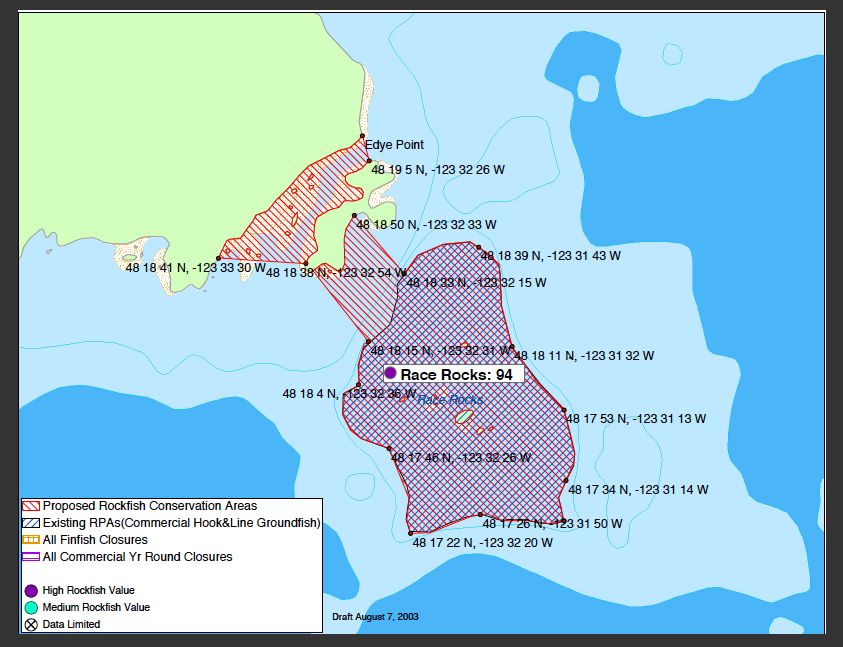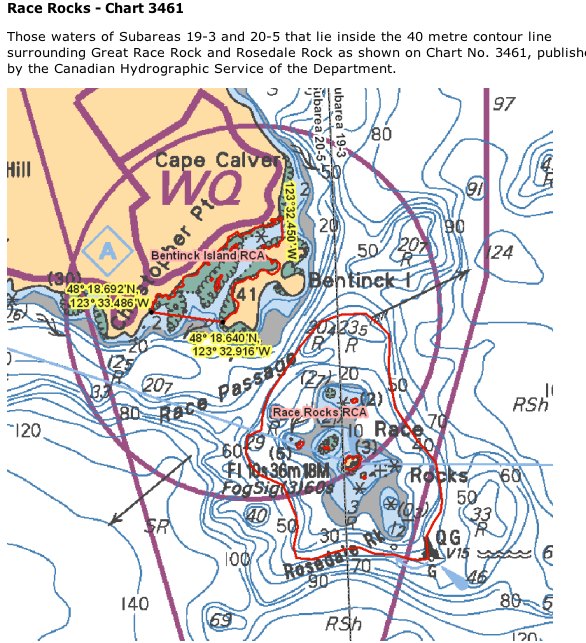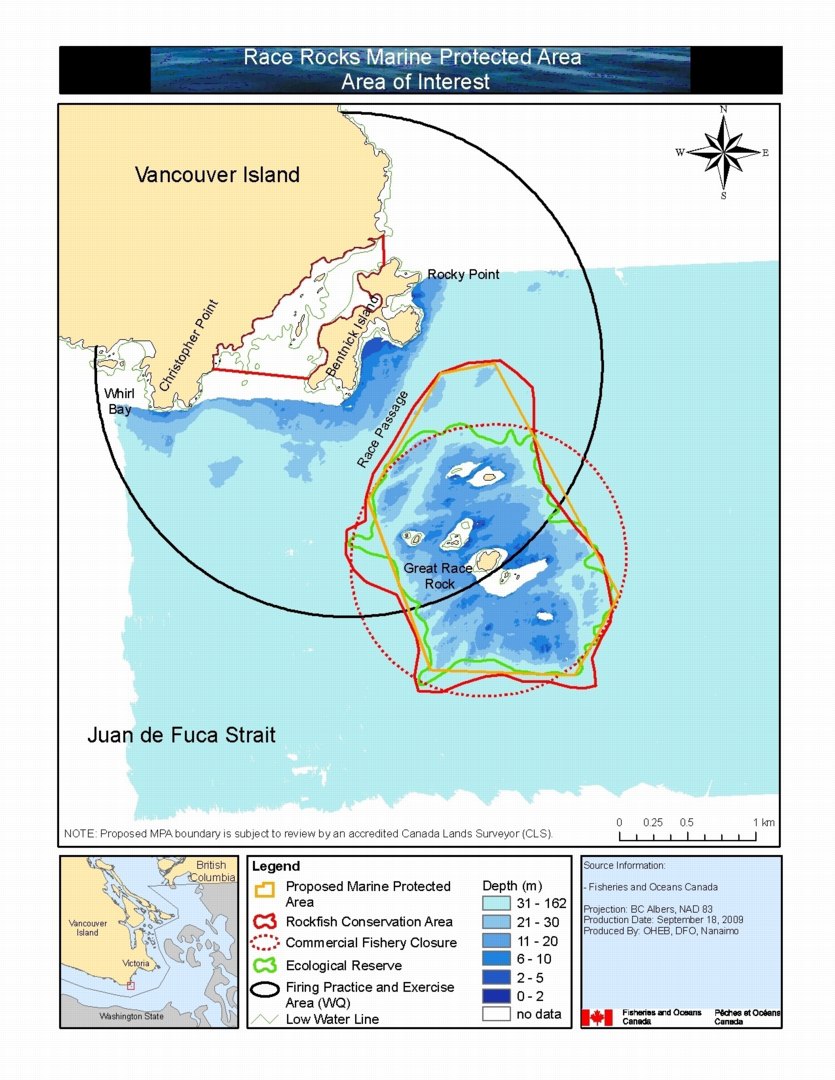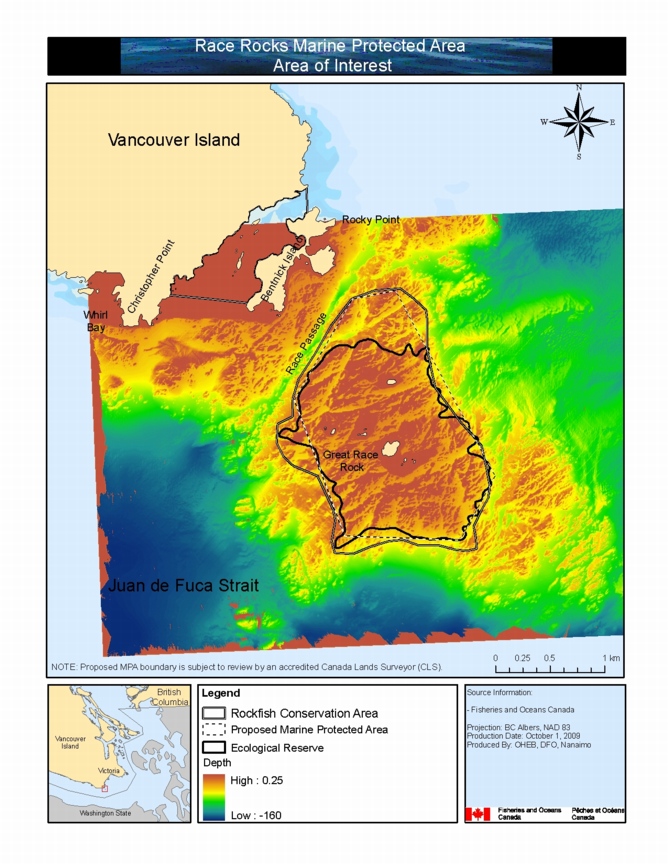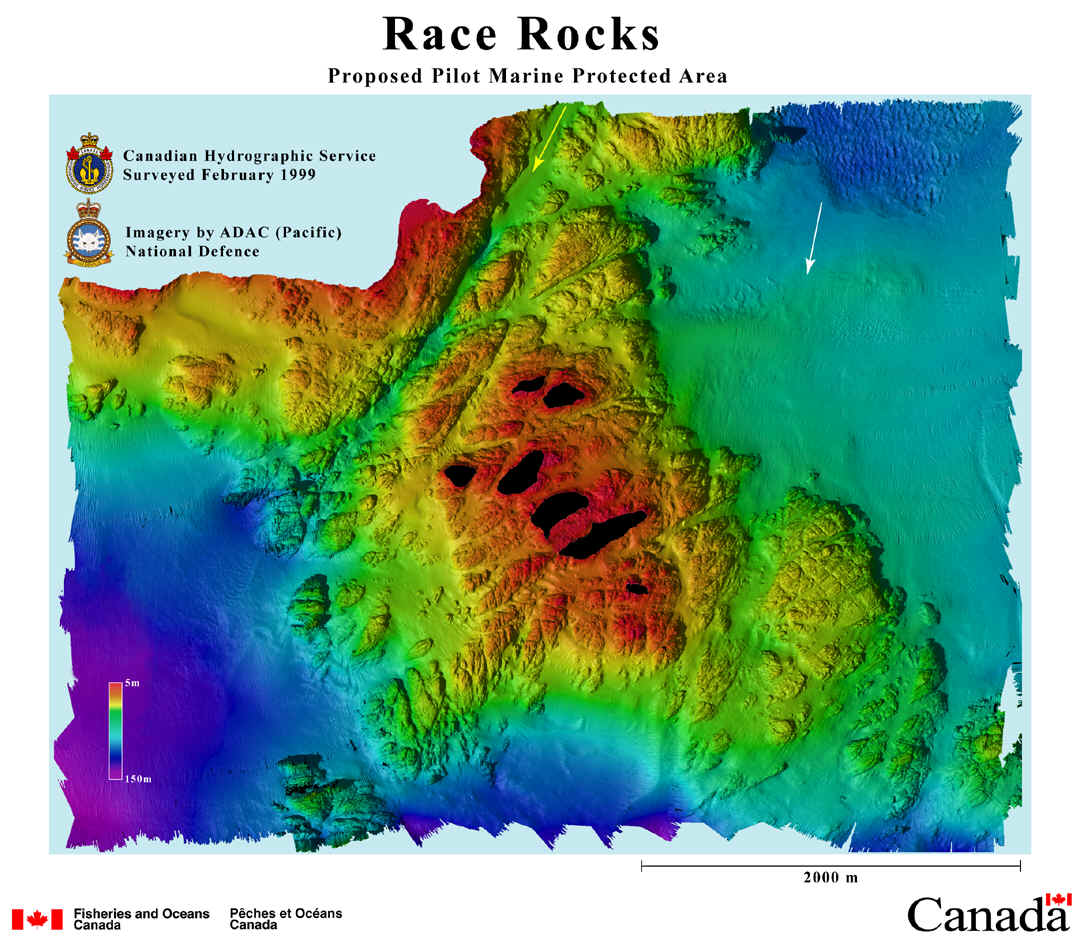This proposal outlines the history of the boundary designation for the Race Rocks Ecological Reserve and the proposed boundaries offering protection in subsequent years.
There are also links to other files with proposals for establishment of a buffer zone and future boundary modifications for the proposed MPA.
| 1.1980: The existing ecological reserve boundaries were established to a depth of 20 fathoms or 36.6 meters. This level was chosen because it was a main contour on the existing marine charts of the day and because it would protect the seabed from overharvesting by divers. | |
| 2 1990: Under petitioning from BC parks and the ecological reserve warden, DFO, recognizing the significance of protecting more of the complete ecosystem at Race Rocks established a closure of all the reserve to commercial fisheries and a closure to recreational fishing of bottom fish. Fishing was allowed for transitory species such as salmon and halibut only. This designation proved to be difficult to enforce due to the distinction of types of fishing. | |
| 3. 2000: In January, the MPA Advisory Board proposed boundaries for the reserve which would have straight sides, easily identifiable with coordinates. This proposal was rejected by the sports fisheries advisory organization. |
|
| 4. 2000: At a meeting of the sports fishing organisation and the Race Rocks Advisory Board members, the MPA advisory process agreed to a complete closure on fisheries within the existing ecological reserve boundary. This was a counterproposal to the new MPA boundaries being proposed, and the Advisory Board accepted that condition. It became part of the Proposal to Designate |
|
| This and the chart above were used to designate coordinates of the area in the first MPA proposal. | |
| 5. 2004: The areas in this map were proposed as a Rockfish Protection area by DFO. | |
| 6. 2004: The actual rockfish protection area established was reduced from the above when it was created by DFO. It is now based on the 40 meter depth. All fishing within that zone was prohibited at that time. | |
| 7. 2009: At the September 25th, 2009 meeting of the Race Rocks Advisory Board, DFO representatives proposed the modification of the MPA boundaries to correspond to the lines indicated . | |
| 8. The chart shown here was produced as a request to overlay the projected boundaries on the multibeam sonar map. | |
| 9. These 3 multibeam sonar images were produced after the first round of MPA advisory meetings, based on research started in 1999. This was the first time that such a detailed profile of the bottom substrate was available. In this and the image below, the colored area represents the topography down to 150 meters. | |
| 10. The multibeam sonar image modelled from a southerly viewpoint | |
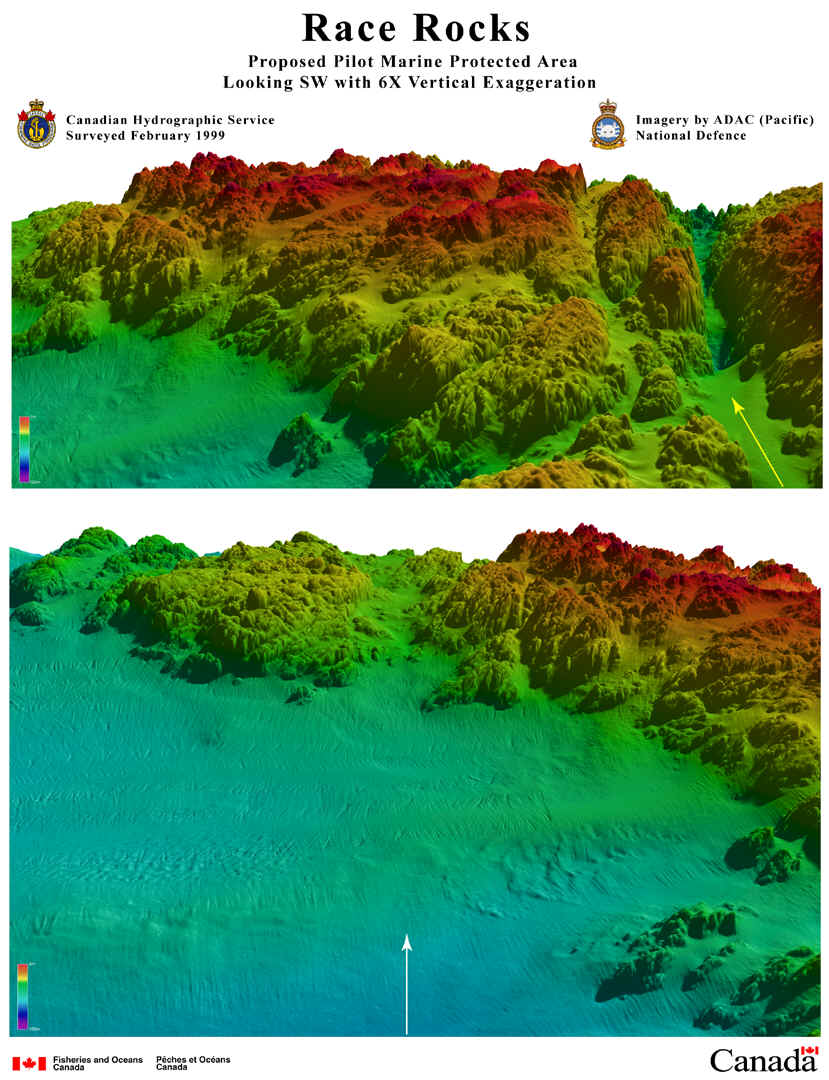 |
11. With this level of imaging now available, it becomes obvious that the existing ecological reserve boundaries do not adequately reflect the geology and geography of the sea bottom and therefore probably do not adequately protect the complete ecosystem of the reef which surfaces as the Race Rocks archipelago. The files linked below provide suggestions for how we may go about dealing with this factor. |
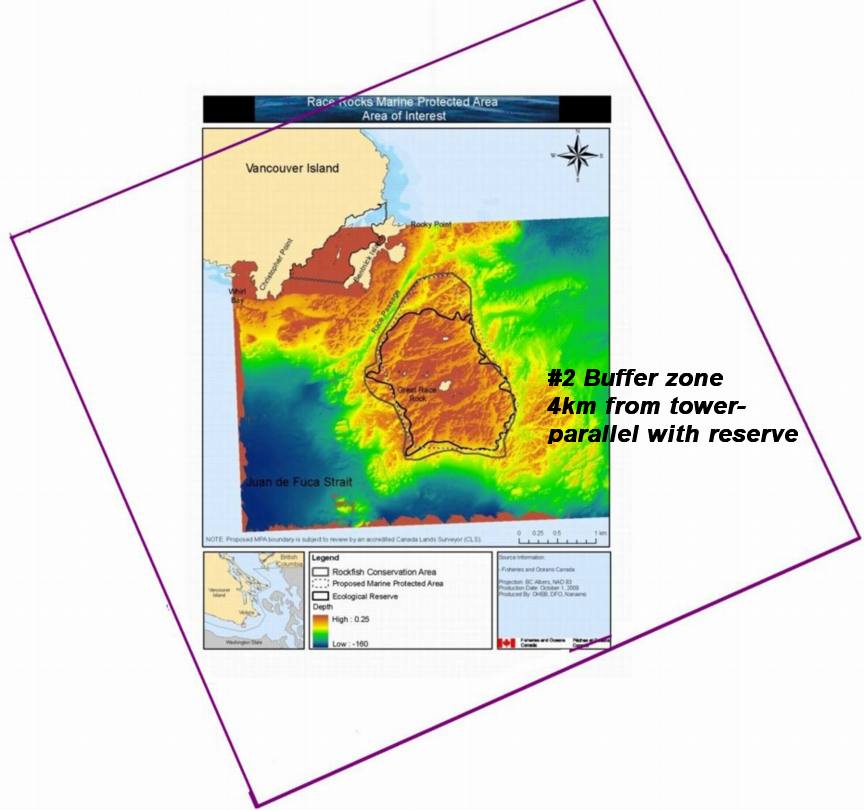 |
Link to proposals options on alternate configurations of Buffer zones |
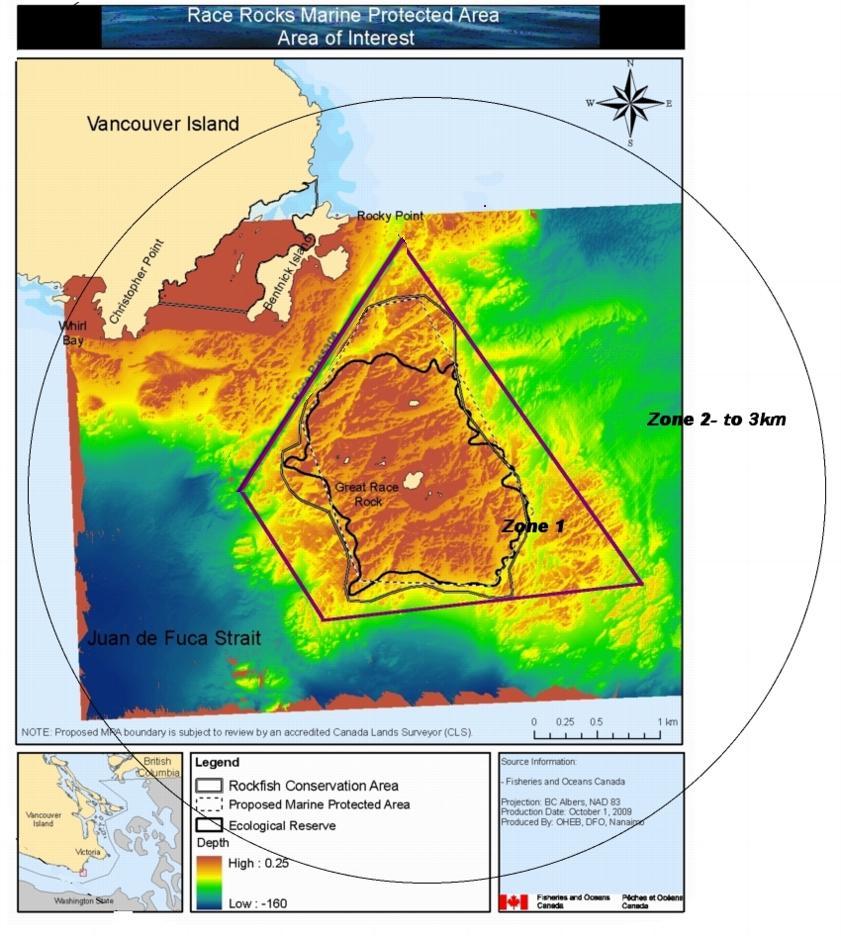 |
Link to proposal options on alternate MPA reserve boundaries |
| This proposal has been submitted by Garry Fletcher, the educational director of racerocks.com, a former biology teacher at Lester Pearson College and the Race Rocks Ecological Reserve warden since the beginning of the reserve in 1980. |
| Link to this MPA benefits file: This reference provides many examples of the research throughout the world on MPA benefits to fisheries enhancement, and biodiversity ) |
| See the other maps and aerial photos of the area on racerocks.com |

